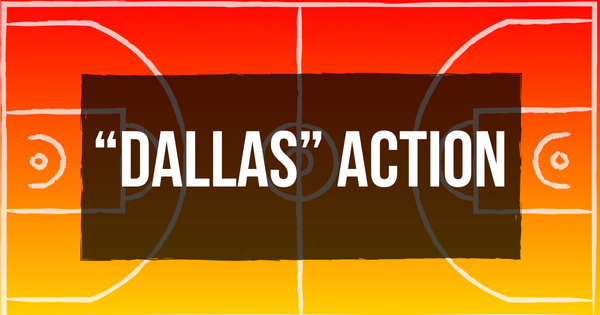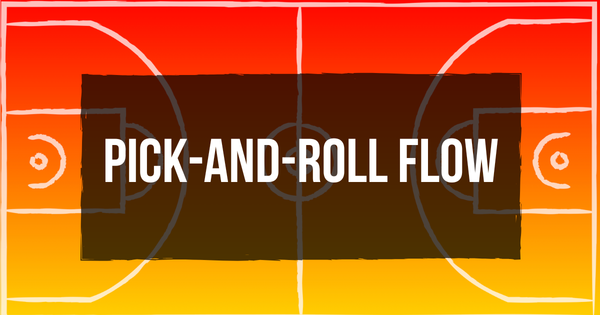Pick-and-Roll Sophistication: Basic Formations
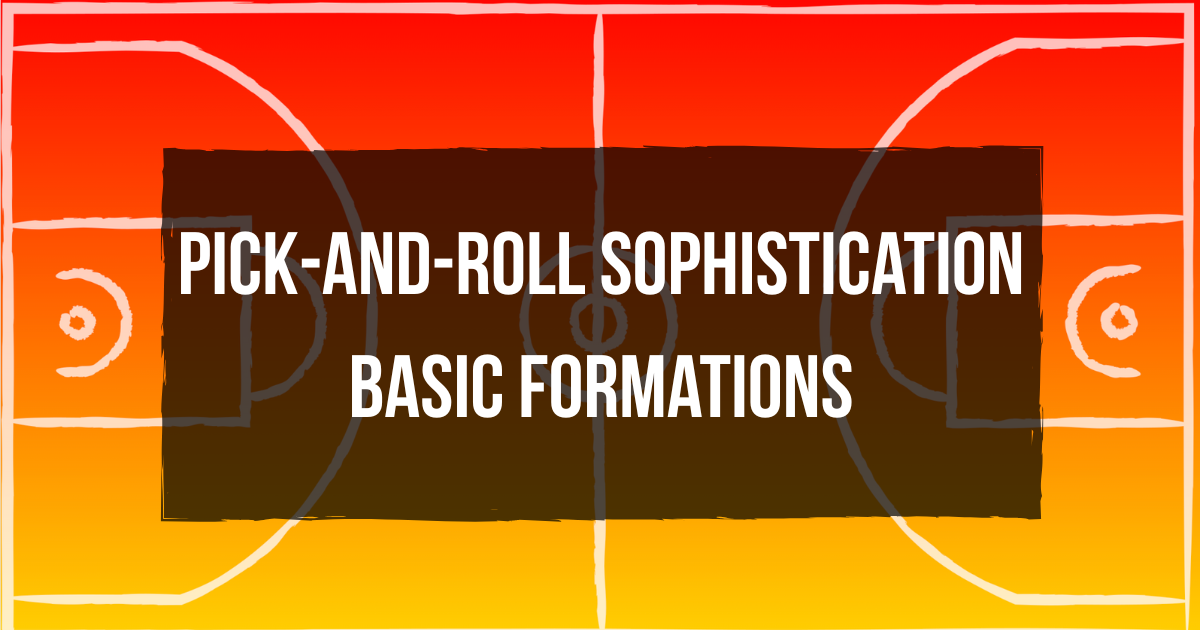
In the Baseline España coach's guide, we call the pick-and-roll the "heartbeat of Spanish basketball." This two-player action, often run from the spread ball screen formation, is the most used offensive weapon in the game.
Our starting point in our series on raising the sophistication level of your ball screen offense is a simple understanding of some basic formations.
The goal is to establish some terminology and categorize a few different and foundational court geographies.
The Three Amigos
Pick-and-Roll is a two-player action, but it is a conversation among three, four and even five players. But simply, there two players in the action and three players out of the action.
We refer to the three players outside of the pick-and-roll action as "The Three Amigos."
Part of what helps us categorize basic formations is the positioning of Los Tres Amigos.
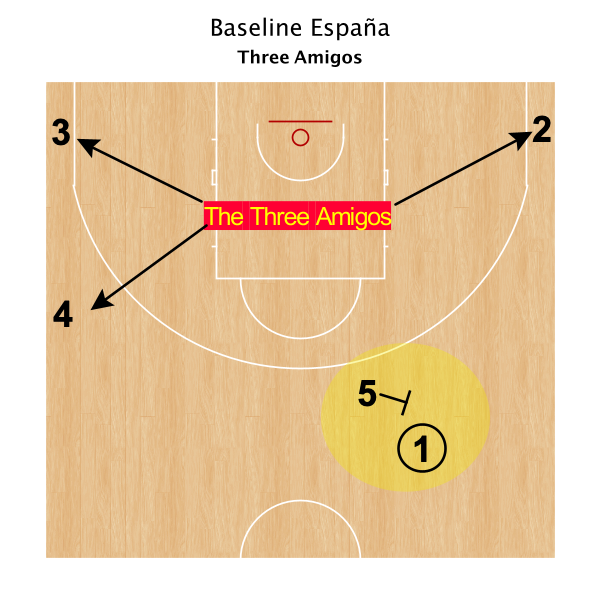
In Fig. 1 above, the offense is setup in the Spread Ball Screen formation. Player 2 forms the single side (el lado de uno) while Players 3 and 4 form the double side (el lado de dos).
Basic Pick-and-Roll Formations
The location of The Three Amigos is one component of our basic formation categories. The others are:
- The screening angle of the player setting the ball screen
- The location of the screen on the court
Let's take a look at some diagrams of the foundational ball screen setups.
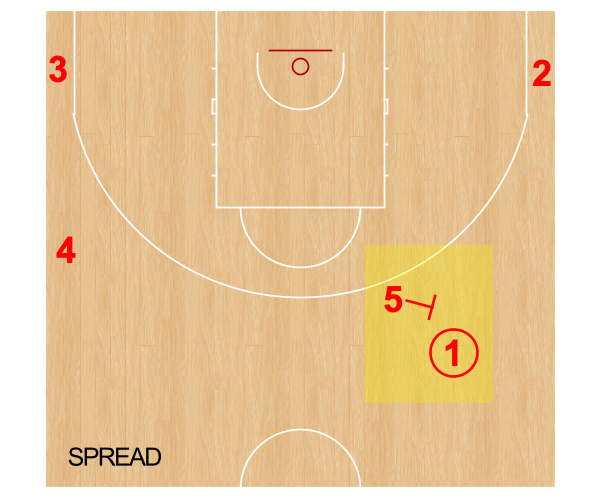
Above is another look at the Spread Ball Screen with the double side and single side. Get very familiar with that!
When teaching players the spread ball screen, emphasize not only the screener and ball handler but also the silent work of The Three Amigos.
Next is the Side (Lado) Ball Screen (Fig. 3 below). Player 5 is setting the ball screen on the outer third, or the side, of the court. The Three Amigos form a side of three.
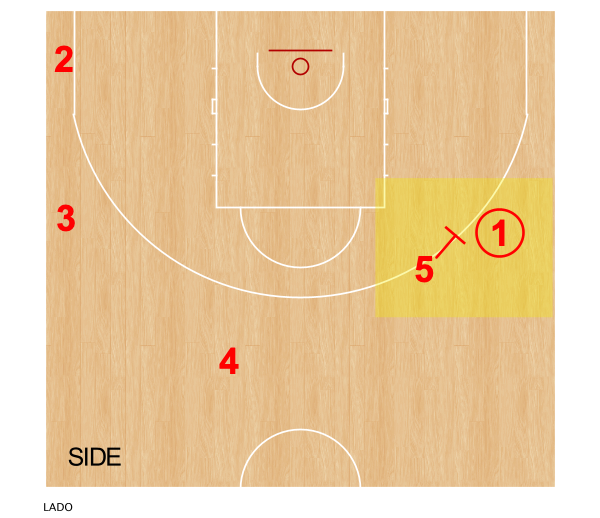
Remember, we are looking at 1) the positioning of The Three Amigos 2) the location of the ball screen on the court and 3) the screening angle of the player setting the screen in the pick-and-roll.
With those three qualities in mind, see the Alley (callejón) Ball Screen in Fig. 4 below.
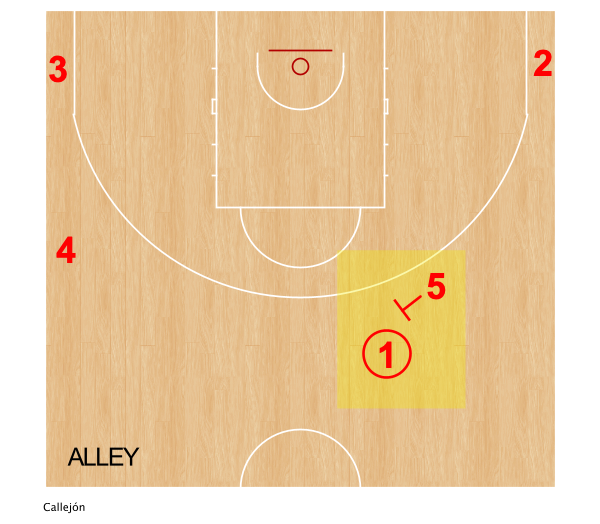
An Alley looks like a Spread, but the screening angle is flipped.

In Fig. 5 above, we see an Alley with an empty corner. It's like a side ball screen but the screening angle is flipped.
Other Ball Screen Formations
There are multitudes of other formations possible. Too many to enumerate. With considerations such as skill and size, coaches can tailor their formations accordingly. For example, a coach might want to keep their Center (Player 5 in diagrams) near the rim or in the "Dunker's Spot."
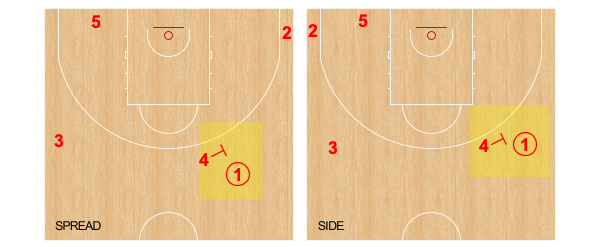
In Fig. 6 above, Player 5 is kept low and behind the defense. The Three Amigos are in different locations changing the formations.
Changing the screening angle like we seen in Fig. 7 below, would make in an Alley.
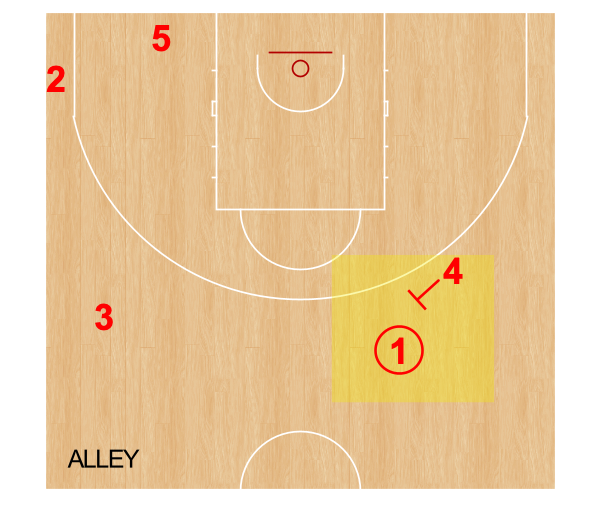
Conclusion
Understanding the basic formations is the beginning point for raising the sophistication level of your ball screen offense. The location of the screen, the screening angle and location of the players outside of the ball screen all impact the space available to attack, how the defense will react and who else is in the action.
As we progress through this series, we will explore some concepts that can apply to all these formations. The goal is to make your pick-and-roll attack a three, four and even five player conversation.


